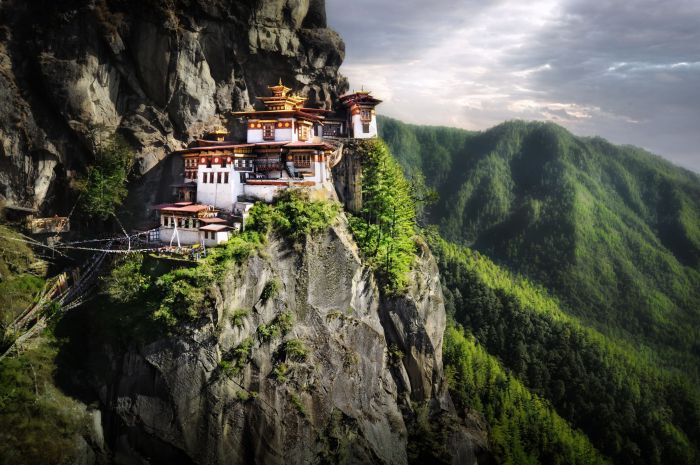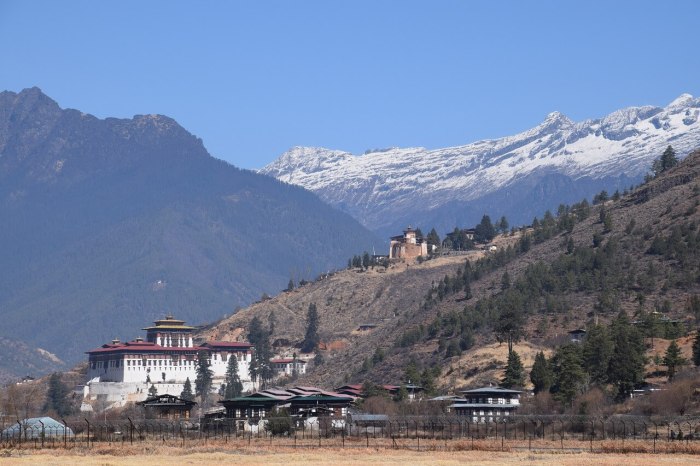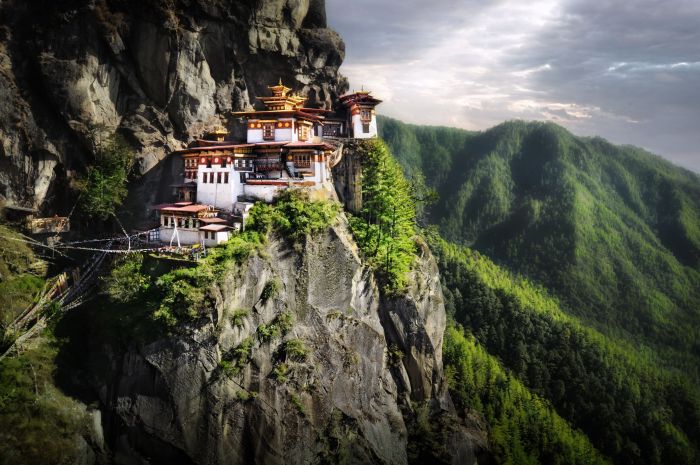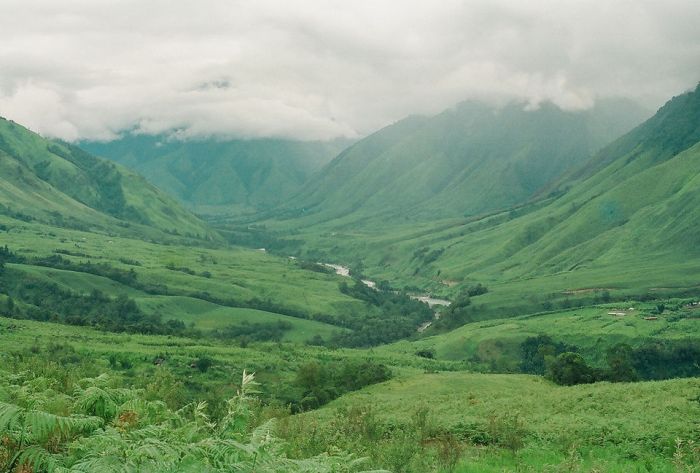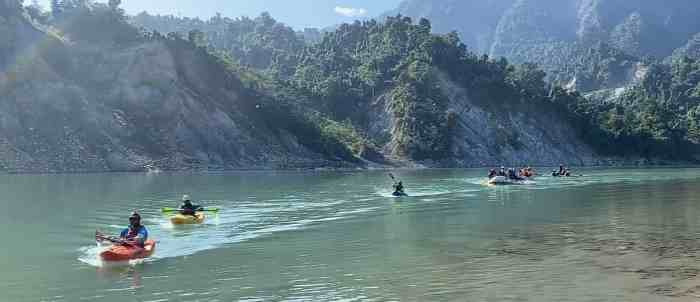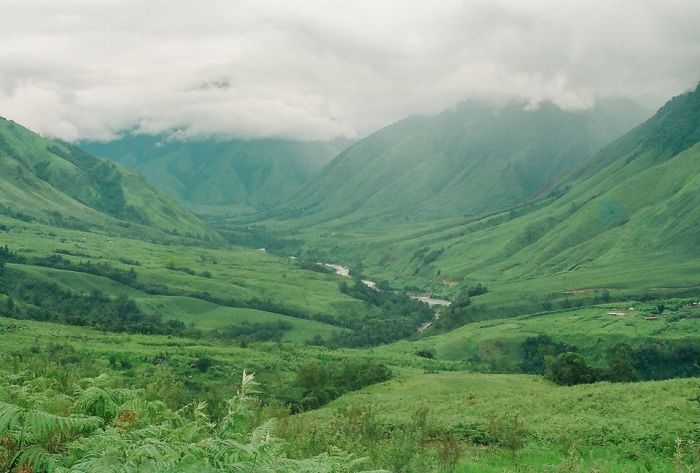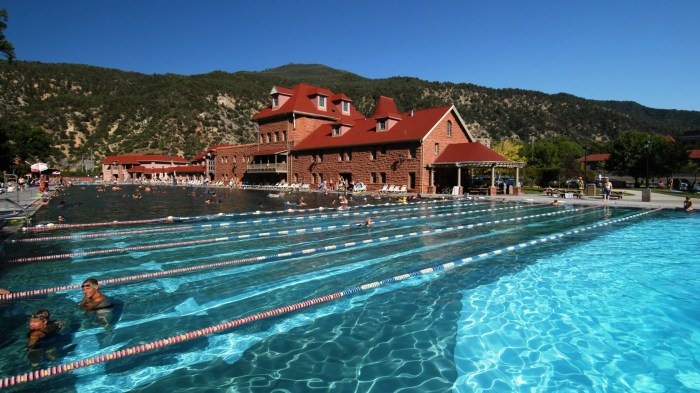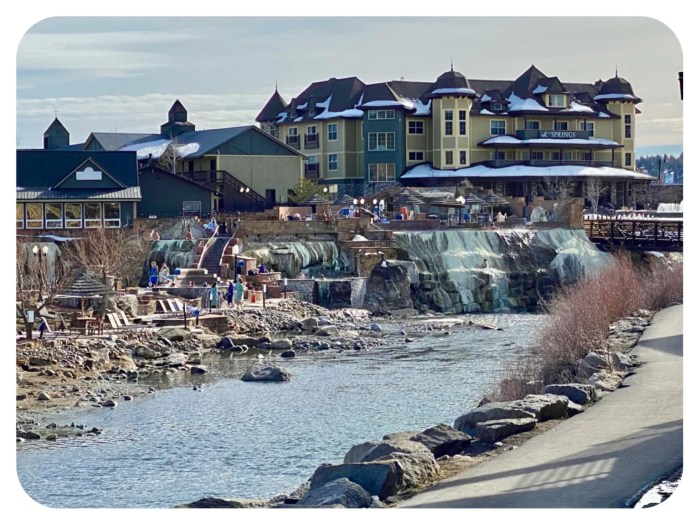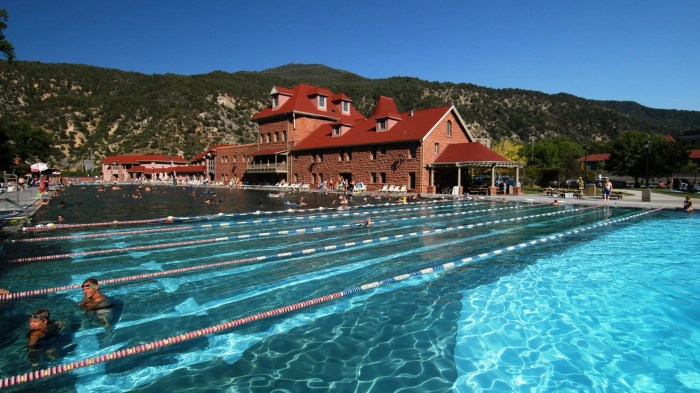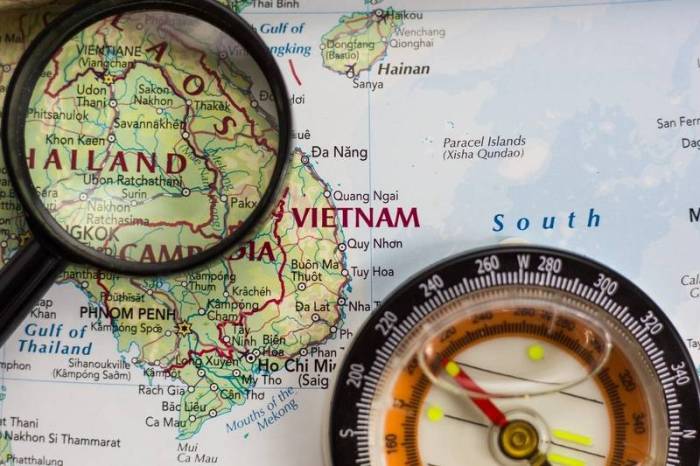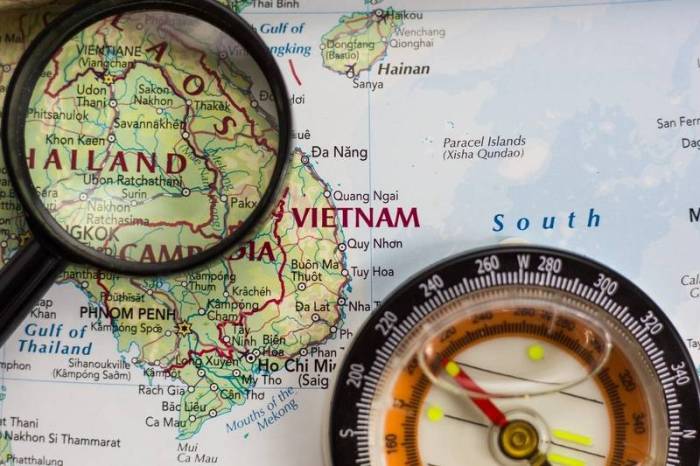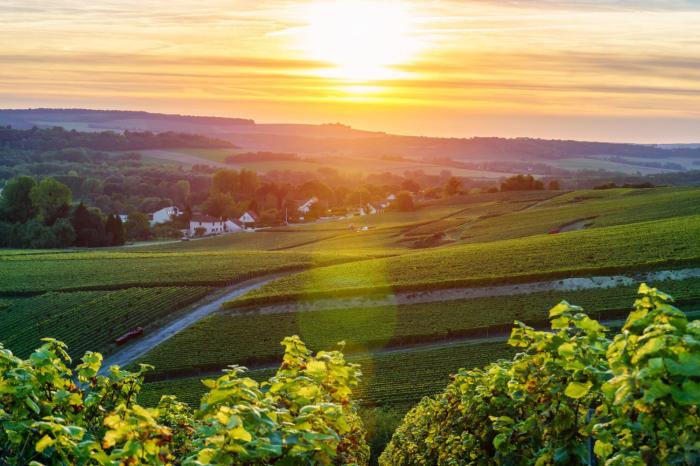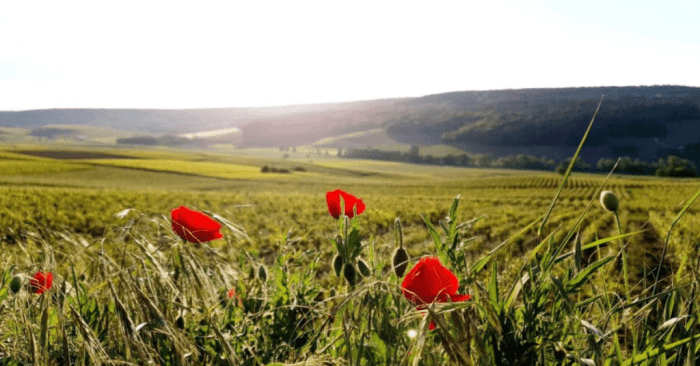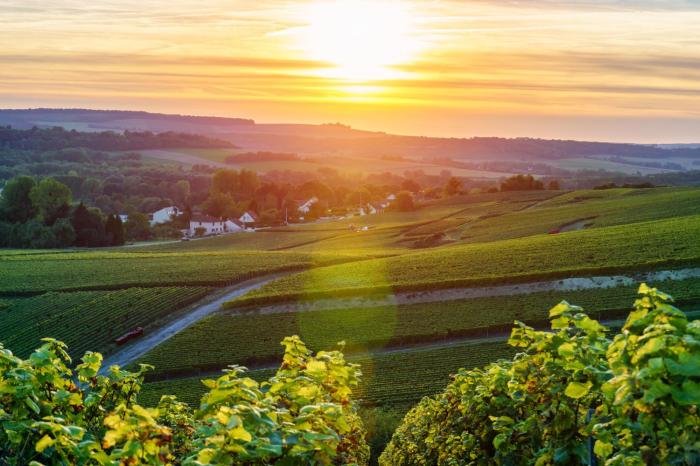Mauna Loa volcano impact on travel to Hawaii is a complex issue, impacting everything from tourism infrastructure to economic consequences. This blog post delves into the potential disruptions, safety concerns, and long-term implications of a volcanic eruption on the Hawaiian tourism industry, examining the various ways in which travel might be affected. From potential damage to hotels and resorts to changes in tourist activities and economic losses, we explore a wide range of factors that need to be considered.
We’ll look at the possible damage to hotels, resorts, and other tourist facilities near Mauna Loa. Disruptions to transportation networks like roads, airports, and ports will be detailed, along with potential impacts on utilities like water and power. We’ll also explore how different tourist activities, such as hiking and volcano viewing, might be affected. The economic consequences for businesses, potential losses in revenue, and the need for financial aid will also be discussed.
Finally, we’ll examine long-term effects on Hawaii’s attractiveness as a tourist destination and ways to enhance the industry’s resilience to future eruptions.
Impact on Tourism Infrastructure

Mauna Loa’s potential eruption poses significant risks to Hawaii’s vital tourism industry. The proximity of numerous hotels, resorts, and other tourist facilities to the volcano means these structures could be directly impacted by lava flows, ashfall, and seismic activity. Understanding these potential impacts is crucial for planning mitigation strategies and ensuring the long-term health of the tourism sector.
Potential Damage to Tourist Facilities
The proximity of tourist infrastructure to Mauna Loa presents a clear vulnerability. Lava flows, particularly if they follow existing valleys or low-lying areas, could directly destroy hotels, resorts, and other accommodations. Ashfall, a common phenomenon during volcanic eruptions, can damage roofs, interiors, and equipment. This damage can range from superficial soiling to structural collapse, impacting the usability and safety of the facilities.
The scale of the damage would depend on the eruption’s intensity and duration. For example, the 1980 eruption of Mount St. Helens resulted in significant property damage to nearby areas, illustrating the potential for widespread destruction.
Disruptions to Transportation Networks
Volcanic activity can severely disrupt transportation networks vital for tourism. Road closures due to lava flows, ashfall, or unstable ground conditions can isolate areas and hinder access for tourists. Airports might be temporarily shut down due to ash clouds, impacting flights and hindering travel plans. Ports could face similar challenges, impacting cruise ship operations and cargo transport.
This disruption could cause significant financial losses for businesses reliant on the smooth flow of tourists and supplies. For instance, the 2010 Eyjafjallajökull eruption in Iceland disrupted air travel across Europe, highlighting the global impact of volcanic events.
Impact on Utilities and Services
Tourism relies heavily on reliable utilities, including water and power. Volcanic activity can disrupt these crucial services. Ashfall can contaminate water sources, rendering them unusable. Lava flows can damage power infrastructure, leading to widespread blackouts. This interruption would affect all aspects of tourism, from hotel operations to visitor experiences.
Furthermore, the availability of emergency services would be critically affected, necessitating careful pre-emptive measures.
Solutions for Maintaining and Restoring Infrastructure
Developing robust emergency response plans is critical. These plans should Artikel procedures for evacuating tourist facilities, securing vital infrastructure, and restoring essential services. Insurance policies for businesses should include provisions for volcanic events. Investing in resilient infrastructure, such as using volcanic-resistant materials in construction, could help minimize damage. Developing clear communication channels to inform tourists about potential disruptions and evacuation procedures is essential.
Additionally, working with local communities and emergency response teams to develop coordinated strategies is vital.
Vulnerability Comparison of Tourism Facilities
| Facility Type | Likely Vulnerability to Volcanic Activity |
|---|---|
| Hotels | High vulnerability to lava flows, ashfall, and seismic activity. Potential for significant structural damage. |
| Resorts | Similar vulnerability to hotels, with additional concerns for recreational areas and supporting infrastructure. |
| Campgrounds/Camp Sites | Moderate vulnerability to ashfall and potential for localized flooding from volcanic activity. Relatively more dispersed than hotels, potentially mitigating damage in some cases. |
| Restaurants/Cafes | High vulnerability to ashfall, disruption of supply chains, and potential for road closures. |
| Visitor Centers | Moderate to high vulnerability, depending on location and construction materials. Public safety and accessibility are key concerns. |
This table highlights the varied levels of vulnerability across different tourism facilities. Factors like location, construction materials, and the scale of the eruption will significantly influence the extent of damage.
Impacts on Tourist Activities
Hawaii’s Mauna Loa volcano, a powerful natural force, significantly impacts tourism. Understanding how various activities are affected is crucial for visitors and the tourism industry to adapt. The changing landscape, potential hazards, and necessary safety measures directly influence the types of experiences available and the overall tourist experience.
Impacts on Hiking and Volcano Viewing
Volcanic activity can dramatically alter hiking trails and volcano viewing areas. Closures may be necessary due to hazards like ashfall, lava flows, or unstable ground. This can severely impact hiking tours and scheduled volcano viewing experiences. Alternative routes and viewing points may be designated, but the availability and accessibility of these alternatives are often subject to the eruption’s progress.
The experience of seeing a volcano erupting is powerful, but it’s crucial to prioritize visitor safety. Safety protocols are essential during periods of volcanic activity.
Changes to Visitor Safety Protocols and Guidelines
Safety protocols for tourists are paramount during volcanic eruptions. These protocols often include restricted access to affected areas, mandatory evacuation orders, and specific guidelines for navigating the changing landscape. Tourist information centers and local authorities must clearly communicate these safety protocols to visitors. Detailed maps and instructions, including evacuation routes, are vital for ensuring visitor safety.
Impacts on Different Tourist Types
Adventure tourists, seeking challenging experiences, might be particularly affected by trail closures or limited access to the volcano. Relaxation tourists, who prefer a more tranquil experience, could still be impacted by altered landscapes and potential disruption to their planned activities. The experience of a volcanic eruption is unique and can be a powerful force of nature. Adapting to the changing circumstances is crucial for all types of tourists.
Alternative Tourist Attractions and Activities
During an eruption, alternative tourist attractions and activities become necessary. These might include cultural tours, historical explorations, visits to museums, or exploring other natural wonders of the island. Local businesses and tourism boards should promote these alternative attractions to maintain visitor interest and economic activity. This demonstrates the importance of diversification in the tourism industry.
Emergency Preparedness Plans for Tourists
Emergency preparedness plans for tourists need significant adjustments during volcanic eruptions. These plans must include clear communication channels, evacuation procedures, and potential shelter locations. Tourist information centers should have readily available emergency contact information, evacuation maps, and information on potential hazards. Furthermore, tourists should be informed about how to stay safe during volcanic eruptions.
Visitor Activities and Risks During a Volcanic Eruption
| Visitor Activity | Potential Risks During Eruption |
|---|---|
| Hiking | Lava flows, unstable ground, ashfall, altered trail conditions, potential hazards |
| Volcano Viewing | Ashfall, volcanic gases, potential hazards from eruptions, limited visibility |
| Beach Activities | Ashfall, potential tsunamis (if eruption affects the seafloor), disruption of coastal areas |
| Water Activities | Ashfall, disruption of marine life, changes in water conditions |
| Exploring Surrounding Areas | Ashfall, hazards from eruption, restricted access to certain areas |
Economic Consequences: Mauna Loa Volcano Impact On Travel To Hawaii

The potential eruption of Mauna Loa, a powerful symbol of Hawaiian identity and a significant contributor to the island’s economy, casts a long shadow over the tourism industry. The disruption caused by such an event would ripple through the archipelago, impacting livelihoods and businesses dependent on the influx of visitors. Understanding the economic fallout is crucial for developing preparedness plans and strategies for recovery.The Hawaiian tourism industry is intricately woven into the fabric of the islands’ economy.
Millions of visitors annually contribute billions of dollars to local businesses, creating jobs and supporting countless families. A volcanic eruption, even if contained, could significantly reduce this vital revenue stream, and the resulting economic hardship could extend well beyond the immediate aftermath.
Forecasted Revenue Losses
The potential loss of tourist revenue is a major concern. Hotels, restaurants, tour operators, and souvenir shops, among other businesses, rely heavily on the consistent flow of tourists. An eruption, even if short-lived, could lead to significant cancellations and a downturn in bookings, directly impacting their income. The extent of the losses will depend on the duration and intensity of the eruption, as well as the effectiveness of emergency responses and communication strategies.
Consider the impact of the 2023 La Palma eruption on Canary Islands tourism; while devastating locally, it didn’t halt all tourism, demonstrating the potential for a more nuanced impact depending on the nature of the eruption and the destination’s resilience.
Potential Losses in Tourism Sectors
The economic consequences will vary across different tourism sectors. Accommodation facilities, like hotels and resorts, will likely face substantial revenue reductions due to cancellations and potential damage to infrastructure. Similarly, tour operators and adventure businesses will experience a decline in bookings, as tourists avoid affected areas. The loss of revenue could be substantial for these businesses, potentially requiring significant financial aid to weather the storm.
Financial Aid and Support
The need for financial aid and support for affected businesses is paramount. Government assistance programs, grants, and low-interest loans could provide crucial support during this challenging period. Such measures would help businesses maintain operations, retain employees, and ultimately contribute to the long-term recovery of the tourism sector. Examining the recovery packages implemented following other natural disasters in tourist destinations can provide valuable insights into the design and implementation of effective aid programs.
Impact on Employment Opportunities
Tourism-related employment opportunities will be directly affected by the eruption. Reduced tourist arrivals will lead to job losses in hotels, restaurants, transportation, and other sectors. The potential for temporary layoffs and a decrease in hiring could lead to long-term unemployment challenges, making targeted job retraining and support programs essential.
Potential Financial Losses Across Tourism Sectors
| Tourism Sector | Potential Revenue Loss (estimated %) ||———————–|————————————|| Accommodation | 30-60% || Tour Operators | 20-50% || Restaurants & Dining | 25-55% || Retail (Souvenirs) | 15-40% || Transportation | 10-30% || Activities & Adventures| 10-40% |This table provides a general illustration of potential revenue loss across various tourism sectors.
The actual percentages may vary significantly depending on the specifics of the eruption.
While the Mauna Loa volcano eruption has definitely put a damper on travel plans for many visiting Hawaii, it’s important to remember that there are still amazing destinations to explore! For a fantastic alternative, consider a weekend getaway to Panama City, where you can experience vibrant culture and stunning beaches. Checking out how to spend a perfect weekend in panama city will give you some ideas on how to make the most of your time there.
Even though the eruption is causing some travel adjustments in Hawaii, there are still many incredible options for adventures around the world, and it’s good to look beyond the obvious.
Strategies for Economic Recovery
Implementing strategies for economic recovery will be critical to restoring the vitality of the Hawaiian tourism industry. Diversifying the economy by investing in other sectors, such as sustainable agriculture or renewable energy, will help reduce the reliance on tourism. Investing in robust disaster preparedness and mitigation plans will reduce the impact of future eruptions. Marketing campaigns promoting the resilience of the Hawaiian Islands can also help attract tourists.
Strengthening partnerships with international organizations and disaster relief agencies will be important to accelerate recovery efforts. Learning from the economic recovery of other volcanic areas can provide valuable insights into these strategies.
Communication and Information Dissemination
Effective communication is crucial during volcanic events, especially for tourists visiting Hawaii. Clear and timely warnings, advisories, and travel restrictions can prevent potential harm and maintain a positive visitor experience. This requires a multi-faceted approach, involving proactive measures and readily accessible information for tourists. Tourism agencies need to be prepared to disseminate information effectively to protect visitors and mitigate any negative impact.Disseminating information about volcanic activity and travel restrictions requires a coordinated effort involving various stakeholders.
Transparency and accuracy are paramount to maintain visitor trust and confidence. Prompt communication minimizes anxiety and allows tourists to make informed decisions about their travel plans.
Mauna Loa’s recent eruption has definitely thrown a wrench into travel plans for Hawaii. Luckily, if you’re looking for a fantastic alternative to traditional island hopping, consider a luxurious cruise like cruises regent seven seas cruises grand voyages. They offer incredible itineraries exploring the surrounding waters and giving you a chance to experience the beauty of Hawaii from a different perspective, though the impact on the overall travel experience to the islands remains.
Effective Communication of Warnings and Advisories
Accurately communicating warnings and advisories to tourists about volcanic activity is critical. This involves clear, concise language avoiding technical jargon. Visual aids, like maps highlighting affected areas, are highly beneficial. Pre-defined communication channels, such as an emergency hotline, email alerts, and dedicated social media accounts, should be established in advance. Examples include providing information on evacuation routes and safe zones.
The recent activity of Mauna Loa has definitely had some impact on travel plans for Hawaii, causing some shifts in flight routes and general visitor activity. While the volcano’s eruption is certainly a big deal, it’s important to remember that Hawaii still offers amazing destinations, and finding alternatives like exploring Utahraptor State Park in Utah can be a fantastic way to enjoy the outdoors and experience another part of the US.
This could be a great way to enjoy the natural beauty of the US, offering a unique experience while the volcanic activity is ongoing, and hopefully it will be back to normal soon.
Strategies for Disseminating Information about Travel Restrictions or Advisories
Disseminating information about travel restrictions or advisories requires a well-structured system. Real-time updates are essential, especially during periods of heightened volcanic activity. This can be achieved through dedicated websites and mobile apps, offering personalized alerts. Using clear and concise language, along with visuals, will enhance understanding and accessibility for tourists. For instance, a webpage could include interactive maps and easily accessible information about closures and restricted areas.
Role of Travel Agencies and Tour Operators
Travel agencies and tour operators play a significant role in disseminating information to their clients. They are the first point of contact for many tourists and are well-positioned to relay important updates. They should be provided with up-to-date information and trained on how to communicate advisories to their clients effectively. Agencies can incorporate pre-trip advisories into their travel packages and provide detailed information about safety protocols and emergency procedures.
Flowchart for Disseminating Information to Tourists
Start | V [Monitor volcanic activity] -> [Identify potential impact on tourists] -> [Determine necessary actions] | | V V [Draft clear and concise advisories] -> [Select communication channels] | | V V [Prepare website/social media posts] -> [Distribute information to agencies] | V [Disseminate information to tourists] | V [Monitor feedback and adjust strategies] | V End
Creating a Webpage or Social Media Post, Mauna loa volcano impact on travel to hawaii
A dedicated webpage or social media post about Mauna Loa’s impact on travel should be easily accessible and prominently featured.
The page should include clear and concise information about the volcano’s current status, travel advisories, and any restrictions. Using high-quality images and maps will enhance understanding. Examples include interactive maps highlighting affected areas, and details about alternative routes. For social media, concise and visually appealing posts with relevant hashtags are important for maximum reach.
Communication Channels and Effectiveness
| Communication Channel | Effectiveness | Description |
|---|---|---|
| Dedicated Website | High | Provides comprehensive information, easily accessible. |
| Social Media (Facebook, Twitter) | Medium-High | Reaches a large audience quickly. |
| Email Alerts | High | Personalized and direct communication. |
| Mobile App Notifications | High | Real-time updates, convenient access. |
| Travel Agency Websites/Newsletters | High | Direct communication with booked customers. |
| Local News Outlets | Medium | Wider reach, but may not be targeted to tourists. |
Long-Term Implications
The eruption of Mauna Loa, while disruptive in the short term, has profound implications for Hawaii’s tourism industry, shaping its future attractiveness and resilience. Understanding these long-term effects is crucial for crafting effective adaptation strategies and ensuring the continued vibrancy of Hawaii’s economy. The impact extends beyond immediate damage; it influences the destination’s image, travel patterns, and the very fabric of its tourism infrastructure.
The long-term effects of volcanic activity on tourism destinations are multifaceted and often unpredictable. Past eruptions, such as Mount St. Helens, demonstrated how the perceived risk associated with volcanic activity can drastically impact tourism in the immediate aftermath. This necessitates a proactive approach to managing public perception and rebuilding trust in the safety and beauty of the destination.
Attractiveness of Hawaii as a Tourist Destination
The perceived risk associated with volcanic activity can significantly impact the attractiveness of Hawaii as a tourist destination. Potential visitors may hesitate to book trips, especially in the short term. This is often exacerbated by media coverage, which can create a negative narrative about the safety of visiting the islands. Conversely, the eruption can also present an opportunity for a unique experience for those seeking adventure and a connection to the natural world.
Long-term, the ability to successfully manage the situation and convey a sense of safety and preparedness will be paramount.
Changes to Travel Patterns and Tourism Strategies
Travel patterns are likely to adapt as travelers seek destinations that present less risk or offer alternative experiences. The rise of eco-tourism and adventure travel could see an increase in demand for tours that emphasize the natural beauty of the islands, but outside of the immediate volcanic zone. This could also lead to a shift in tourism strategies, with a focus on diversifying offerings to cater to different types of travelers.
Promoting other aspects of Hawaii, like its cultural experiences and historical sites, could be a key component of this strategy.
Enhancing the Resilience of the Tourism Industry
Building resilience requires a multi-pronged approach, incorporating proactive risk assessment and disaster preparedness plans. Regular monitoring and forecasting of volcanic activity are essential for the development of early warning systems. These systems will allow for proactive evacuation plans and minimize potential disruption to tourism operations. Investing in robust communication channels to disseminate accurate information to travelers and the public is also crucial.
Potential New Tourism Opportunities
The eruption could inspire new tourism opportunities, such as educational tours focusing on volcanoes and their impact on the landscape. This could involve creating guided tours to observe the eruption safely from a distance and educating tourists about the area’s geological history. Furthermore, the unique circumstances could encourage scientific tourism, attracting researchers and academics to study the volcanic process.
Local Community Adaptation
The local community plays a critical role in adapting to these long-term changes. This involves supporting alternative income streams for businesses and individuals affected by the eruption, perhaps through training programs and financial support. Furthermore, the local community can leverage the eruption to promote a deeper understanding and appreciation of the natural world, fostering environmental awareness and responsibility.
Community engagement in the development and implementation of tourism strategies is vital.
Table of Long-Term Impacts and Potential Solutions
| Long-Term Impact | Potential Solutions |
|---|---|
| Reduced Tourist Arrivals (short-term) | Proactive communication, emphasizing safety and alternative experiences; marketing campaigns showcasing other attractions |
| Shift in Tourism Demand | Diversification of tourism offerings; promotion of cultural and historical sites; development of eco-tourism and adventure packages |
| Increased Awareness of Volcanic Activity | Educational tours, scientific research facilities; clear communication channels for disseminating information |
| Long-term Damage to Infrastructure | Robust disaster preparedness plans; improved infrastructure resilience; long-term funding for recovery efforts |
| Community Economic Disruption | Support alternative income streams; community-based tourism initiatives; training programs |
Final Thoughts
In conclusion, a volcanic eruption at Mauna Loa poses significant challenges to Hawaii’s tourism industry. Careful planning, proactive communication, and robust emergency preparedness are crucial to mitigating the impact on both visitors and the local economy. Understanding the potential disruptions to infrastructure, tourist activities, and the financial repercussions is essential for developing effective strategies to maintain and restore the industry’s vitality.
Ultimately, the resilience of the Hawaiian tourism industry hinges on a comprehensive understanding of these potential impacts and the development of appropriate solutions.

